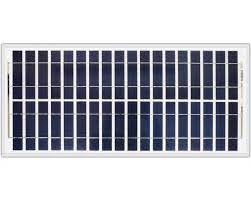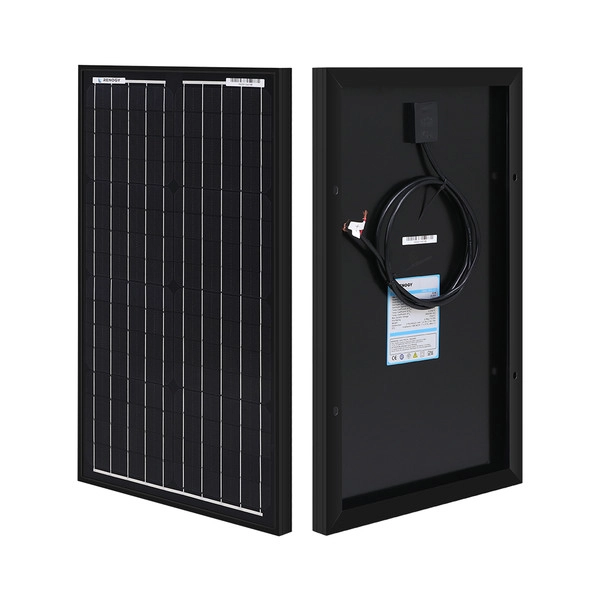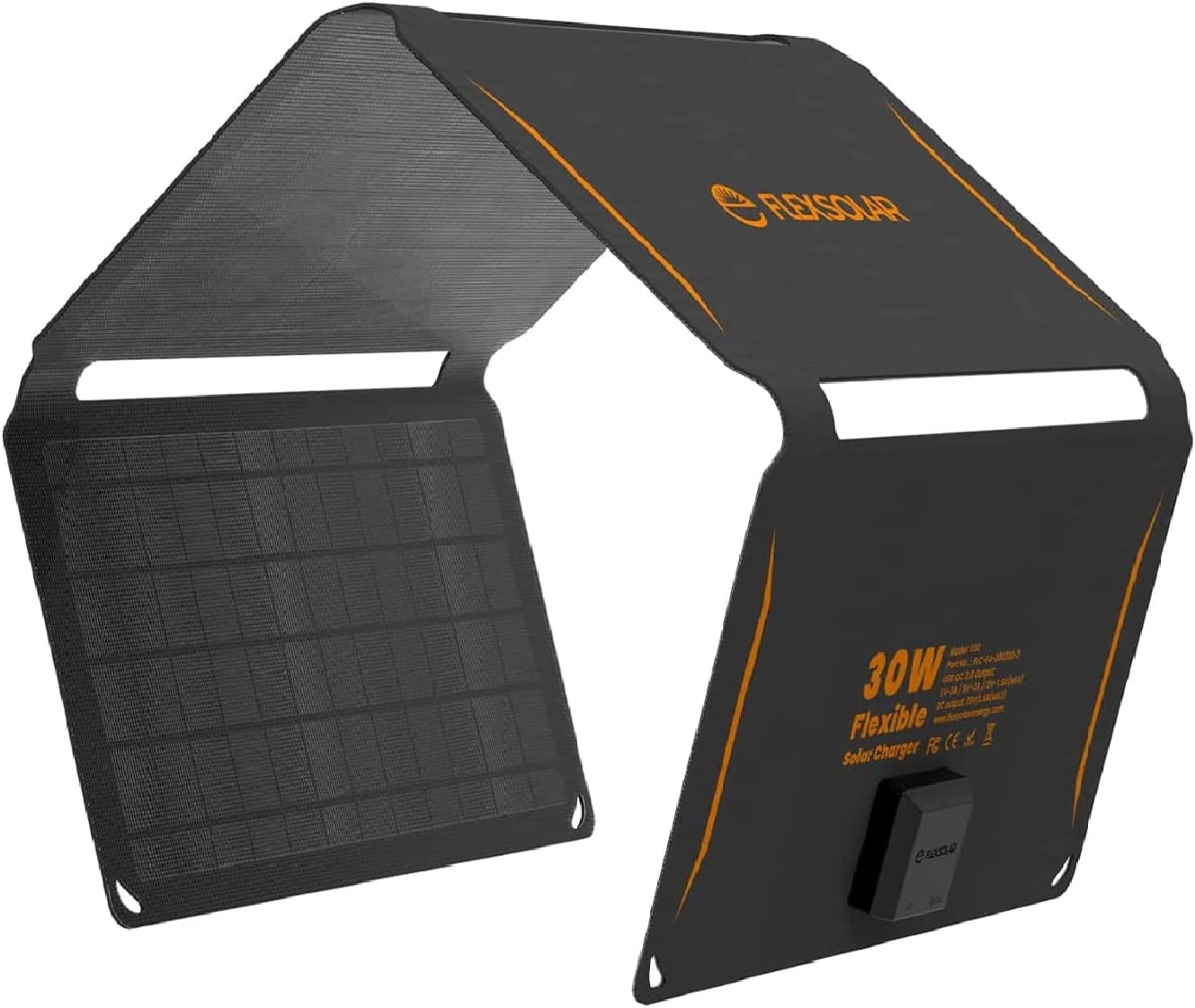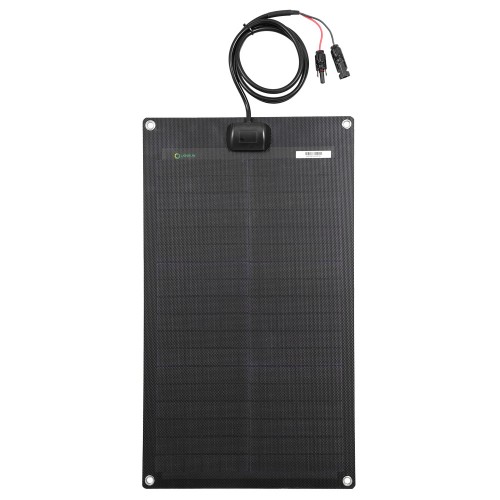A 30 Watt solar panel could be just what the solar doctor ordered. Okay there’s no such thing as a solar doctor (although sometimes I wish there was). Nevertheless, if you need a panel that will produce a significant amount of power but also offers a degree of portability, the 30 Watt variety could be just the medicine you need.
We’ll take a look at these panels and answer the following questions:
- How much power does one of these panels produce?
- What can a 30 watt solar panel run?
- What types of these panels are available?
- How much does a 30 watt panel cost?
By then you should know if one of these panels is the right choice for you. First, however, let’s find out where a 30 Watt solar module fits into the grand scheme of things as far as solar panel sizes are concerned.
A 30 Watt Panel Vs. Other Solar Panel Sizes
Although a 30 Watt panel is on the smaller side, it is not the smallest panel available by a long shot. In fact, you can actually find 1 watt solar panels that are used for maintaining small batteries. A 30 watt panel offers 30 times more power than one of these maintainer panels!
But what about the big boy panels? Many solar companies offer 450 watt panels that are designed to be part of a solar array that powers your home. This is 15 times the power of a 30 watt panel! This reminds us that our 30 watt friend definitely isn’t in the ‘large panel’ category.
As we can see, a 30 watt panel is not the smallest panel around and it is certainly not the biggest. If we had to categorize this panel, we would say it is in the middle of the ‘small panel’ category. Now let’s take a look at whether this panel is the right size for you.

Choosing a Solar Panel Size
The amount of solar panel wattage that is right for you will depend on different factors. Here are a few considerations to keep in mind:
- Budget
- Although you might have to spend more per Watt when you purchase a smaller panel, your total cost will usually be lower. You will have to weigh the ‘cost per watt’ vs ‘overall cost’ and decide which approach best fits your budget. You will also have to decide whether it is worth it to spend more money on a high efficiency solar panel.
- Power
- A 300 Watt panel would be overkill if you’re looking for a solar iPod charger but it could be perfect as part of a rooftop solar panel system. Knowing how much power you need is half the battle.
- Portability
- The main benefit of choosing a small solar panel over its bulkier counterpart is that you can take it anyplace you need to go. This is especially important if you are in the market for a solar phone charger or another portable solar power solution.
How Much Power Does a 30 Watt Panel Produce?
You probably want to know how much power a 30 watt solar panel will produce so you know how long it will take to charge your batteries and devices. Before we get into the panel’s power details, however, we should give you a quick warning:
Solar panel results will vary depending on many factors, including:
- Efficiency of solar panel
- Intensity of sunlight
- Charge controller quality
- Battery age and type
Now that we’ve got that warning out of the way, let’s move on to getting a rough idea of how long it will take a 30W solar panel to charge your batteries and gadgets. To do this we need to do a little math (don’t worry, we’ll keep things as simple as possible!).
The first thing we need to figure out is how much electric current the 30 watt panel will produce. To get this number we simply divide the power in watts by the voltage in volts. This will vary slightly for different 30 watt solar panels due to different ratings for maximum power output (Pmax) and voltage at maximum power (Vmp). A good rule of thumb is that your 30W panel should provide about 1.5 amps of current in full sunlight.
Then we need to determine the number of ‘amp hours’ (Ah) that are in our battery or device. For instance, an iPhone 13 Pro has a battery capacity of about 3 amp hours.
Now we just divide the amp hours in the battery by the amps our solar panel produces:
3 amp hours = 2 hours
1.5 amps
So, without taking into account all of the factors we mentioned above, it will take about 2 hours to fully charge your iPhone with a 30 watt solar panel. You can use this calculation to get an approximate charging time for other gadgets and power banks.
If you’re using your solar panel to maintain your car, motorcycle, or marine battery you won’t need to do any calculations. Your panel will just keep your battery at its optimum state and the charge controller will ensure it isn’t overcharged.
What Will A 30 Watt Solar Panel Run?
Since you’re probably already considering a 30 Watt solar panel, let’s take a look at some of the things that a panel with this kind of power can do. Some of the recommended uses for a 30 Watt solar panel include:
- Using it as a marine solar panel
- Keeping an emergency communication system charged
- Remote power for laptops, satellite phones, cell phones, and GPS units
- Powering a remote solar lighting system
- Commercial applications such as security sensors, remote telemetry, signals, instrumentation systems, and navigation aids
Keep in mind that a solar panel itself will only provide you with power when the sun is shining. This means that at nighttime and on cloudy days your solar panel won’t be powering anything. This is why we recommend pairing your solar panel with a charge controller and a 12 volt battery. Your panel will charge the battery and you can use the battery to charge your devices (even when the sun isn’t shining!).
Types of 30 Watt Solar Panels
If you’ve decided that a 30 watt panel will suit your needs, you have a couple of things to consider:
- Rigid vs Roll-Up vs Folding
- A rigid solar panel is durable and can be secured to flat surfaces securely. Roll-up solar panels are more lightweight and are much easier to throw in a backpack when you’re on the move. A folding solar panel can also be convenient to carry and is another lightweight option when you’re on the move.
- Amorphous Panel vs Crystalline
- Monocrystalline solar panels offer the highest efficiency available. Polycrystalline panels are less efficient but are also usually less expensive. Amorphous solar panels are ‘thin-film’ panels that are lightweight and operate effectively in all daylight conditions (even on cloudy days). This can make it a great option for portable applications.
How Much Does A 30 Watt Solar Panel Cost?
Thankfully the cost of solar panels has dropped significantly over the last ten years. You’ll still find quite a range of prices when you’re shopping for solar panels, however.
The following options will give you a general idea of the prices you can expect for a 30 watt panel (these prices are subject to change):
- The Renogy 30 Watt Monocrystalline Solar Panel is currently available at $58.19. This high efficiency panel is great for charging your gadgets when you’re off-grid.

- The FlexSolar 30W Portable Solar Charger is currently on sale for $69.99. This folding solar panel is great for camping trips and hiking. It features USB-C and DC ports to charge your devices.

- The Lensun 30W Flexible Solar Panel is currently on sale for $69.00. This lightweight panel can mold to a curved surface and is ideal for RV and marine use.

This information should give you a good start in your quest for a 30 Watt solar panel. If you want to learn about other solar panel sizes, check out the following pages:
Good luck!
